The Most Expensive Cities in Europe | Updated in November 2022
Europe is a dream destination for many expats and travelers. What’s not to like? Rich history, diverse culture, great cuisines… Well, no one said it’d be cheap; it all comes at a cost .
With the war in Ukraine, supply disruptions, and the spike in energy prices, 2022 proves to be a challenging year. A massive cost of living crisis is the result.
While Hong Kong continues to be the most expensive city in the world for expats and travelers in, the winner in Europe belongs to Zurich. As a matter of fact, Switzerland holds the lavish medal with four cities in the top five most expensive cities in Europe!
This guide covers the following expensive cities in Europe:
To calculate the Price Index value for each city, Expatistan assigns a value of 100 to a central reference city which is Prague. After establishing the reference point, the Price Index value of each other city in their database is determined by comparing their cost of living to the cost of living in Prague.
For example, if a city has a Price Index of 134, it means that living there is 34 percent more expensive than living in Prague.
See the below chart for the price index of the expensive cities in Europe listed in our article.
Ranking
City
Price Index
London (United Kingdom)
Top 10 Most Expensive Cities in Europe
If you are planning to live in Europe, it’s crucial to assess the cost of living in different cities. But, living in a cheap city is not necessarily the best option, you should check out the benefits of living in the most expensive cities in Europe, as well. After all, they are expensive for a reason…
Below, you may find the 10 most expensive cities in Europe according to Expatistan’s cost of living index as of October 2022. We’ve also added a cost of the living section with data we’ve collected from Numbeo. Note that these figures are subject to change and this is why we recommend making a thorough search when you decide your relocation to a certain city. Also, we’ve converted the local currencies to Euro.
1. Zurich, Switzerland
As you probably already know, Switzerland is one of the most expensive countries in the world, and Zurich stands out as the most expensive city in Europe.
With a rich history and many museums, in addition to its central position in Europe and proximity to the famous Swiss Alps, Zurich is often a popular stop on a European adventure. However, this adventure may cost a fortune.
It’s true that Zurich has a reputation for being costly. This holds true for both the expense of living generally and real estate. Fortunately, though, the net compensation is among the best in the world, and there are plenty of jobs available for foreigners.
Like in other financial centers, prices can increase significantly depending on where you live. This is especially true with real estate, which may be challenging for digital nomads and expats to handle.
Cost of Living
Accommodation
One-bedroom apartment in the city center: €1,952
One-bedroom apartment outside the city center: €1,525
Restaurants
McMeal at McDonald’s: €15.47
Meal, Inexpensive Restaurant: €25.79
Cappuccino: €5.39
Beer: €7.22
Markets
Milk (1 liter): €1.74
Loaf of Fresh White Bread (500g): €3.10
Eggs (12): €5.71
Banana (1kg): €2.89
Utilities (Monthly)
Basic (Electricity, Heating, Cooling, Water, Garbage): €246
Internet: €50
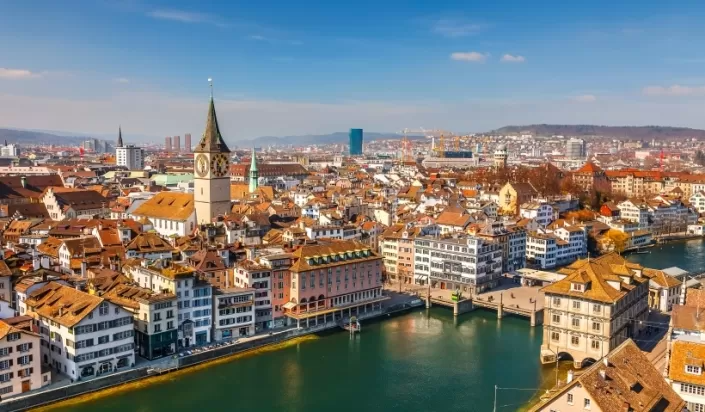
Zurich, Switzerland
2. Geneva, Switzerland
Geneva, a cosmopolitan city and the second-largest city in Switzerland, is a significant financial and diplomatic hub.
In every sense of the term, living in Geneva is luxurious. Its standard of living is among the highest in Europe, but so is its expense of living. Even by Swiss standards, Geneva is considered very expensive for expats living in Switzerland. The cost of living in Geneva is possibly higher than in your home country. It is preferable to purchase necessities in your home nation in order to save money for the move.
But, Geneva is a beautiful city with so much to offer that many foreigners choose to live there. It’s situated at the end of “Lake Geneva” and offers many beautiful landscapes. Despite the high expense of living, the city offers a high quality of life.
Cost of Living
Accommodation
One-bedroom apartment in the city center: €2,100
One-bedroom apartment outside the city center: €1,750
Restaurants
McMeal at McDonald’s: €15
Meal, Inexpensive Restaurant: €26
Cappuccino: €4.61
Beer: €8
Markets
Milk (1 liter): €1.60
Loaf of Fresh White Bread (500g): €2.67
Eggs (12): €5.46
Banana (1kg): €2.61
Utilities (Monthly)
Basic (Electricity, Heating, Cooling, Water, Garbage): €188
Internet: €55
3. London, UK
London is among Europe’s most expensive cities. The English capital carries the reputation of an extremely expensive city. Well, it’s safe to say the Big Smoke lives up to its reputation. With one of the most valued currencies in the world, the pound sterling £ , the land of Big Ben does indeed have a higher cost of living, even for those who earn Euro or American dollars.
London is the most costly city in the UK to live in due to the prohibitively high rent prices, but the relatively high earnings assist to offset this. The average rent in Greater London is the highest in the UK.
London can be an expensive city, but you get value for your money because almost anything you could want is right outside your door. And the general quality of life is excellent. Few cities can compare to London in terms of its artistic, cultural, sporting, culinary, and social scenes.
Cost of Living
Accommodation
One-bedroom apartment in the city center: €2,150
One-bedroom apartment outside the city center: €1,565
Restaurants
McMeal at McDonald’s: €7.99
Meal, Inexpensive Restaurant: €18.27
Cappuccino: €3.71
Beer: €6.85
Markets
Milk (1 liter): €1.26
Loaf of Fresh White Bread (500g): €1.24
Eggs (12): €2.73
Banana (1kg): €1.48
Utilities (Monthly)
Basic (Electricity, Heating, Cooling, Water, Garbage): €283
Internet: €34

London, UK
4. Lausanne, Switzerland
Located in French Switzerland, the city of Lausanne is a typical Swiss city, made of pure elegance and quality of life. But it’s true that it’s one of the most expensive cities to live in Europe.
Despite being a small city, there are plenty of chances for digital nomads there. Lausanne offers a wealth of knowledge along with a variety of activities and cultural events that you should put on your calendar. You will undoubtedly adore Lausanne because there is always something to do, whether it is strolling and taking in the breathtaking views or dining and dancing at one of the many local celebrations.
Lausanne is known for hosting the Olympic headquarters and being a student city. The place has popular ski resorts, is between the mountains, and has a beautiful lake, the Leman, where locals practice windsurfing and water skiing.
Cost of Living
Accommodation
One-bedroom apartment in the city center: €1,610
One-bedroom apartment outside the city center: €1,328
Restaurants
McMeal at McDonald’s: €15.47
Meal, Inexpensive Restaurant: €25.79
Cappuccino: €5.08
Beer: €8.25
Markets
Milk (1 liter): €1.72
Loaf of Fresh White Bread (500g): €2.94
Eggs (12): €6.54
Banana (1kg): €2.63
Utilities (Monthly)
Basic (Electricity, Heating, Cooling, Water, Garbage): €296
Internet: €56
5. Basel, Switzerland
Basel, which is on the northern and western borders of Switzerland and the southern Black Forest of Germany and Alsace, respectively, offers outstanding retail, cultural, and leisure opportunities. Because of this, Basel offers a unique way of life throughout all of Switzerland.
Nothing is more than a few steps away if you live in Basel…Parks and playgrounds, as well as museums, eateries, and nightclubs. There are breath-taking modern homes and offices, as well as a medieval town center and 19th-century historic areas.
Basel is a green city and you’re invited to enjoy sports, games, and recreation throughout the year in small neighborhood oases and city parks. But everything comes with a price and this beautiful cist is on the list of the most expensive cities to live in Europe.
Cost of Living
Accommodation
One-bedroom apartment in the city center: €1,326
One-bedroom apartment outside the city center: €1,150
Restaurants
McMeal at McDonald’s: €16.53
Meal, Inexpensive Restaurant: €25.82
Cappuccino: €5.34
Beer: €7.75
Markets
Milk (1 liter): €1.70
Loaf of Fresh White Bread (500g): €3.26
Eggs (12): €5.79
Banana (1kg): €2.62
Utilities (Monthly)
Basic (Electricity, Heating, Cooling, Water, Garbage): €277
Internet: €52
6. Dublin, Ireland
Dublin remains the sixth most expensive city in Europe in October 2022. Dublin is known for its bustling nightlife and proximity to Ireland’s stunning natural landscapes. However, it is one of the most expensive cities in Europe, largely due to the high number of expats, and thus the high rents.
But there are many reasons why you can consider living in Dublin. The city offers all the benefits of city living while also maintaining a laid-back atmosphere. The rushing that is typical in other capital cities won’t happen there.
Dublin’s neighborhood’s mountains and coast also provide a short gateway to the outdoors. Public transportation makes it possible to reach many hiking trails and bathing areas, giving you a break from the rush and bustle of daily life.
Cost of Living
Accommodation
One-bedroom apartment in the city center: €1,653
One-bedroom apartment outside the city center: €1,458
Restaurants
McMeal at McDonald’s: €9.50
Meal, Inexpensive Restaurant: €18
Cappuccino: €3.55
Beer: €6
Markets
Milk (1 liter): €1.15
Loaf of Fresh White Bread (500g): €1.66
Eggs (12): €3.10
Banana (1kg): €1.76
Utilities (Monthly)
Basic (Electricity, Heating, Cooling, Water, Garbage): €145
Internet: €51

Dublin, Ireland
7. Copenhagen, Denmark
The capital of Denmark has been a popular tourist destination for several years. Unfortunately for budget-conscious digital nomads, however, Copenhagen is usually a short trip. Denmark is among the countries with high quality of living, as a direct correlation, there is a very high cost of living.
Still, this ever-changing Nordic city boasts a sizable foreign community and serves as a creative and innovative hotspot. For many digital nomads and expats foreigners, trying their luck in Copenhagen makes perfect sense; it’s a terrific place to have a fulfilling life.
Cost of Living
Accommodation
One-bedroom apartment in the city center: €1,483
One-bedroom apartment outside the city center: €1,111
Restaurants
McMeal at McDonald’s: €11.09
Meal, Inexpensive Restaurant: €18.83
Cappuccino: €5.71
Beer: €6.72
Markets
Milk (regular), (1 liter): €1.67
Loaf of Fresh White Bread (500g): €2.90
Eggs (regular) (12): €3.97
Banana (1kg): €2.56
Utilities (Monthly)
Basic (Electricity, Heating, Cooling, Water, Garbage): €188
Internet: €34
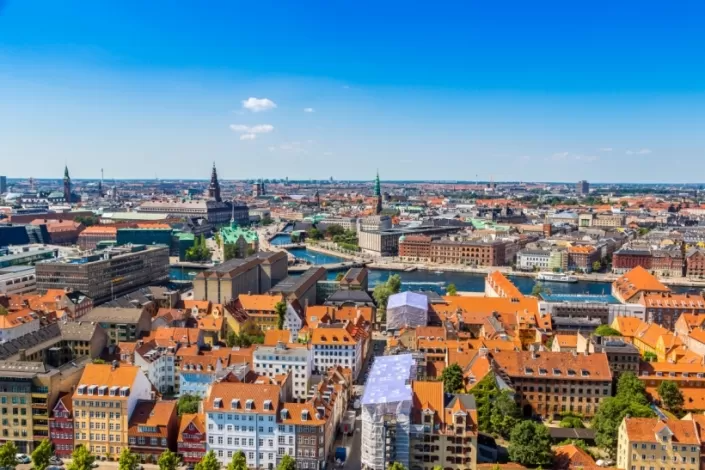
Copenhagen, Denmark
8. Oslo, Norway
Oslo is praised for its quality of extremely high life, constantly on top of European cities. But generally, high quality of life translates to high costs. And in Oslo, there’s is no exception.
The city ranks seventh on the list of most expensive cities in Europe in October 2022.
But here is the deal: Oslo is the most multicultural city of Norway. It is also one of Europe’s fastest-growing capital cities. The fjords, the forests, the archipelagos… Norway is without a doubt one of the most beautiful places on the planet.
Cost of Living
Accommodation
One-bedroom apartment in the city center: €1,387
One-bedroom apartment outside the city center: €1,103
Restaurants
McMeal at McDonald’s: €11.13
Meal, Inexpensive Restaurant: €19
Cappuccino: €4.39
Beer: €9
Markets
Milk (regular), (1 liter): €1.88
Loaf of Fresh White Bread (500g): €2.75
Eggs (12): €3.82
Banana (1kg): €2.12
Utilities (Monthly)
Basic (Electricity, Heating, Cooling, Water, Garbage): €219
Internet: €46
9. Amsterdam, The Netherlands
The Netherlands is another country that has its place among countries with high quality of life and this certainly comes with a price. Amsterdam, the capital city, ranks as the ninth most expensive city in Europe according to the 2022 index.
However, this doesn’t seem to stop travelers and expats from traveling to this beautiful city in great masses all throughout the year. The city is alive with cultural events such as art expositions, concerts, and other acts catering to a wide range of tastes.
Living in the Dutch capital may not be as expensive as in Nordic capitals; still, be prepared to pay a significant portion of your monthly income on housing. This is especially true if you choose a fully furnished house.
Cost of Living
Accommodation
One-bedroom apartment in the city center: €1,671
One-bedroom apartment outside the city center: €1,423
Restaurants
McMeal at McDonald’s: €10
Meal, Inexpensive Restaurant: €18
Cappuccino: €3.47
Beer: €5.50
Markets
Milk (regular), (1 liter): €1.15
Loaf of Fresh White Bread (500g): €1.66
Eggs (regular) (12): €3.06
Banana (1kg): €1.63
Utilities (Monthly)
Basic (Electricity, Heating, Cooling, Water, Garbage): €228
Internet: €46

Amsterdam, Netherlands
10. Trondheim, Norway
Trondheim is Norway’s third-largest city. It was once the country’s capital and is considered the most historic city in Norway. It’s a university town, with lots of pubs and young people. In addition to the various historical monuments to visit, those who know Trondheim say there is no lack of excitement.
This city offers it all: history, architecture, wonderful restaurants, great green areas, interesting nightlife, and a plethora of student organizations.
But note that even with many discounts, public transit is fairly expensive, so the simplest method to save money is to invest in a bicycle. Luckily, the city is very tiny in the sense that everything in the city center is within walking distance, so you’ll be able to save a lot of money on transportation.
Cost of Living
Accommodation
One-bedroom apartment in the city center: €1,157
One-bedroom apartment outside the city center: €910
Restaurants
McMeal at McDonald’s: €10.63
Meal, Inexpensive Restaurant: €19.73
Cappuccino: €4.19
Beer: €9
Markets
Milk (regular), (1 liter): €1.98
Loaf of Fresh White Bread (500g): €3
Eggs (regular) (12): €4.28
Banana (1kg): €2.30
Utilities (Monthly)
Basic (Electricity, Heating, Cooling, Water, Garbage): €132
Internet: €47
There you have it – list of the most expensive cities in Europe. But don’t let this ranking deter you from visiting the continent. Europe is very big and also home to many cities that cater to different budgets.
Related Articles
Frequently Asked Questions About Most Expensive Cities in Europe
What are the top 10 most expensive cities in Europe?
According to Expatistan, below are the most expensive cities in Europe to visit and to live in.
Top 10 expensive cities in Europe
1. Zurich, Switzerland
2. Geneva, Switzerland
3. London, UK
4. Lausanne, Switzerland
5. Basel, Switzerland
6. Dublin, Ireland
7. Copenhagen, Denmark
8. Oslo, Norway
9. Amsterdam, the Netherlands
10. Trondheim, Norway
Expatistan provides a value of 100 to a central reference city, Prague, to generate the Price Index value for each city. Following the establishment of the reference point, the Price Index value of each other city in their database is determined by comparing the cost of living in that city to the cost of living in Prague.
For example, a Price Index of 134 indicates that living in that city is 34% more expensive than living in Prague.
Which part of Europe is expensive?
Western Europe is considered to be more expensive than Eastern Europe. Switzerland is considered to be the most expensive, while Scandinavia is also very expensive. In general, we can say that the prices go up as you go up the North.
Also, it’s worth noting that four Swiss cities rank in the Top 10 expensive cities in Europe list.
Which European countries are the richest?
With over 50 countries and non-country territories, many of which have millennia of worldwide influence, Europe is home to some of the most prosperous countries on the planet.
The most common fundamental measure of national wealth is Gross Domestic Product (GDP), which represents the total value of goods and services generated by a country over a specific time period (typically a year). The top six major European countries together had a GDP of more than $1 trillion (US$) in 2020, totaling $13.833 trillion (US$). These statistics place Europe’s financial leaders among the world’s most productive countries.
The top 3 richest countries in Europe by total 2020 GDP are:
- Germany – $3.8 trillion
- United Kingdom – $2.7 trillion
- France – $2.6 trillion
What is the number 1 most expensive city in Europe?
Zurich (Switzerland) is considered to be the most expensive city in Europe. According to the Expatistan survey, the city’s price index is 244.
The cost of traveling Europe: real budget numbers from 9+ years of travel

As someone who has been traveling full time for nearly nine years, most of that time in Europe, these are probably the questions I get most often about my lifestyle.
Money, unsurprisingly, is the biggest obstacle people think they’ll face on the road. Because if vacations are so pricey, wouldn’t full-time travel be even more so?
This is why for the last 9+ years, while I’ve been traveling full-time, I’ve kept track of my budgets all over the world. Because the truth is that full-time travel can be expensive (just like staying put can be expensive), but it doesn’t have to be. And the only way I know to prove it is to share my own real budgets.
Today, I’m back to share more budget updates with you. More insights into how I travel full-time and what it costs to live and travel in Europe.
First, though, let’s talk about travel styles…

Luna sporting bedhead in Gozo, Malta.
What full-time travel looks like for me
First, it’s important to say that there’s no right or wrong way to travel full time. There’s no standard. Every person I know who does it does it differently.
I have friends who circle back to their favorite places every single year. I have friends who are always chasing new adventures. I’ve met digital nomads who live out of hostels and move every few days and nomads who spend a year or more in one place.
So, before I dive into how I travel, I’ll caveat it by saying that my way is not the way. There are people who travel on a much lower budget than mine and people who travel on a higher budget than mine. There are people who travel faster and people who travel slower. This budget breakdown is based on my experiences and my experiences alone.
Okay, so what are my experiences?

A moody Gozo landscape.
For the first few years, I traveled solo with my dog. For five years, I traveled as part of a couple (though my budgets here on the blog reflect my half of shared expenses + 100% of my personal expenses). And now I’m back to solo-girl-with-dog-takes-on-the-world.
I mostly travel around Europe, though I’ve also done a bit of North and South America in the past few years (and before I hit the road full-time, I visited every continent except Antarctica).
I prefer to stay in one place for at least a month (and sometimes two or three) and I tend to rent comfortable apartments in local neighborhoods. If I’m staying in a hotel or hostel, it’s usually only for a weekend trip or a travel day.
I’m a foodie through and through, so I devote a large portion of my budget to good, fresh, usually organic food and I eat out pretty regularly, especially if I’m in a place known for its cuisine.
I work part-time (on content strategy and copywriting). This means big chunks of my week are devoted to work, so someone retired or vacationing is likely to spend quite a bit more than I do.
And in my spare time, I love to cycle, hike, read, explore, and eat, most of which is cheap or free and keeps entertainment budgets on the low side. I rarely do museums or indoor attractions.

Sheep fleeing the scene on a long hike in the Swiss Alps.
The cost of traveling Europe: monthly expense breakdown
Before we get into individual budgets around the world, here’s a breakdown of my general monthly expenses and how I approach them:
Housing: This was my biggest expense in the US, and it’s my biggest expense now. From 2012 to 2015, when I was traveling solo, I spent about $1,000 per month. In 2015 to 2021, my partner and I split the rent, so we could afford a nicer space and usually keep our individual spending on the lower side. I shot for under $800 per person per month and we often came in under $600 each. Now, solo again and with accommodation prices having risen over the years, I’m upping my housing budget to $1,500. I’ll still try to come in under when I can, but that’s my new ceiling.
So, what’s the secret to affordable accommodations while traveling in Europe? Traveling slow. Monthly rental costs are significantly lower than nightly or weekly rentals. On sites like Flatio and Airbnb, monthly discounts run anywhere from 40% – 70%.
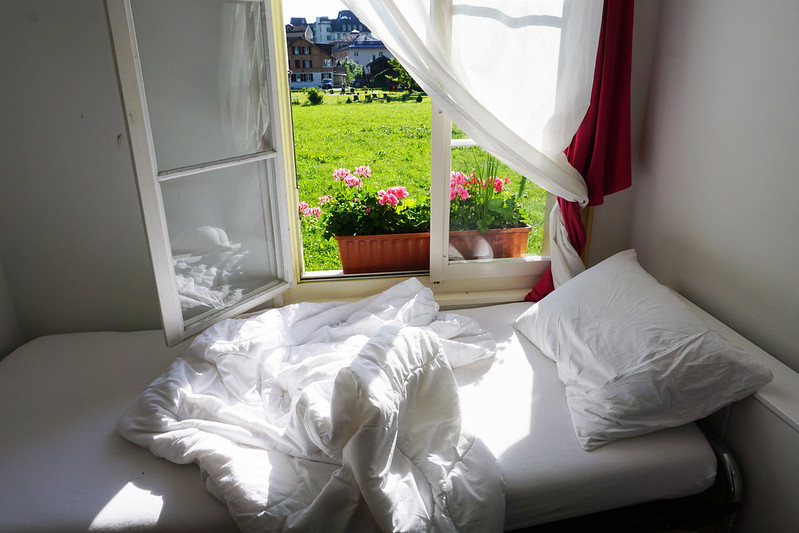
My summer room in a Swiss farmhouse.
Food: Perhaps unsurprisingly, this foodie’s second highest expense is meals. I track my spending on groceries separately from my spending on eating out. I don’t put a budget ceiling on groceries because eating fresh, high-quality food is really important to me and I’d rather spend a bit more on groceries (and a bit less on other things) than take shortcuts with my health or joy.
In the states, I shopped at organic grocery stores and tried to buy healthier options, which were often a bit pricier. In Europe, I shop at fresh markets, local butchers, and tiny bakeries most of the time and stay away from imports that might have questionable chemicals or ingredients.
I always strive to only buy what I need and to buy it in the best quality, most local form I can. I mostly cook at home instead of eating out and when I do eat out I go for quality over quantity.
Recent grocery budgets have run about $393 (Zagreb, Croatia), $614 (Thun, Switzerland), $653 (Bad Ischl, Austria), and $429 (Tartu, Estonia). Eating out budgets in those same locations were around $257 (Zagreb), $0 (Thun), $41 (Bad Ischl), and $88 (Tartu). This means totals for those three places landed at $650 (Zagreb), $614 (Thun), $694 (Bad Ischl), and $517 (Tartu). As you can see, food spending varies, but not enormously. If you read my older budgets, you’ll also notice that the average has gone up over time (which makes sense, because inflation).

Bull-heart tomato, Switzerland.
Transportation: Since I tend to stay longer in one place, transportation costs generally run pretty reasonable (e.g. far less than I spent when I owned a car). Every month or two, I buy a long-distance train ticket or two, and maybe once or twice a year I take a flight (though I try to fly as little as possible both because I hate flying and I try to be conscious of my environmental footprint).
In between big train journeys, I choose to walk whenever possible (which, in Europe, is nearly always) and only take buses and metros when the weather is walking-prohibitive, if the walk would be more than an hour long, if I’m carrying something heavy, or if I’m in a particularly busy city and the walk would be crowded or stressful.
These days, I spend anywhere from about $25 (Prague unlimited monthly transit pass) on a month where I’m staying put to $300ish (trains from Rennes, France, to Prague, Czech Republic) on a month when I’m moving from one base to another.
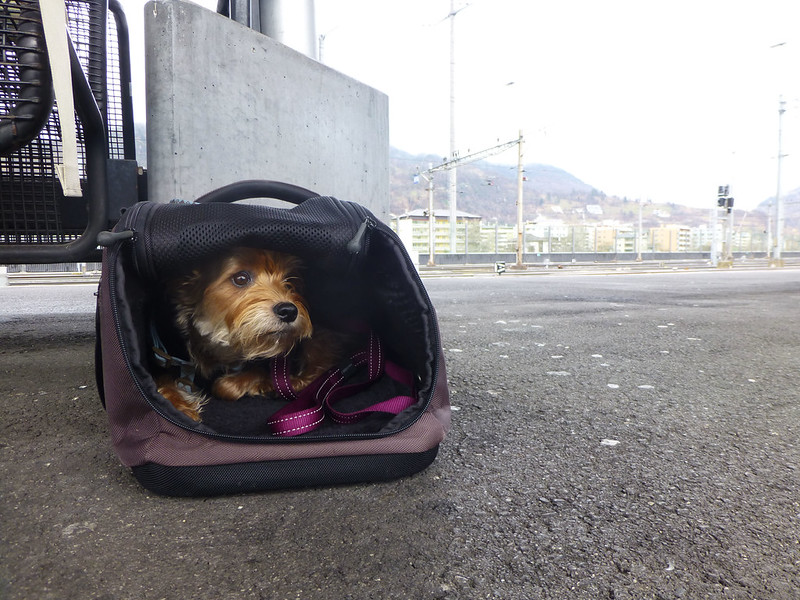
Waiting for the train.
Luna the traveling pooch’s food and care: This varies a little from country to country, but rarely exceeds $200 per month. Luna eats a homemade diet of brown rice, potato, lean beef, salmon oil, sunflower oil, and vitamins and I’m not very strict about separating her food budget from mine, so expect that some of the grocery budget is actually going to Luna.
As with human health care, I’ve found vet care to be significantly more affordable in Europe (compared to the US). In Latvia, four injections, a blood test, two weeks of pancreatic enzyme pills, a vet consult, and an exam cost just over $100. In Dubrovnik, Croatia, in a similar vet emergency, the bill for the sedation, IV fluids, blood work, x-ray, exam, anti-nausea shot, and 100 days worth of pancreas pills was about $150. In the US, the cost would have been at least tripled in each of those cases. A single blood test in Colorado cost us upwards of $200 last time we were there.
Entertainment/fun money: When I’m traveling, most of my activities are free or cheap, so this line item is always pretty small compared to the others.
Supplies: These tend to run less abroad as well, in part because I am careful about what I buy, since I carry everything on my back, and, in part because I’m less bored and thus feel less of a need to shop. The ironic and wonderful thing about this is that the things I buy are often higher quality and more expensive, yet I generally spend less overall than I did in the states.

Lunch in Rome!
Health insurance and healthcare: I pay $268 per month for GeoBlue insurance that covers me anywhere in the world except the US. I’m pretty happy with them. They’ve set up direct billing for me multiple times (which made doctor visits very smooth) in places like Rome and Dubrovnik and they very quickly reimbursed me for a hospital visit after an overenthusiastic puppy bit me too hard at a dog park. I recommend them highly.
Previously, I tried travel insurance through World Nomads, which I found wildly frustrating (despite marketing themselves to travelers, they require you to jump through a LOT of paperwork hoops that require access to printers, scanners, and copy machines) and IMG Global, who ignored my emails and took months upon months to even acknowledge my claims after I was hospitalized on Malta. I would not recommend either company.
For anyone who’s used a healthcare system abroad, it’ll come as no surprise that pretty much everywhere in cheaper than the US. Pre-Obamacare, I paid $150 for three months of birth control pills in the US. A three-month supply (and a doctor visit to get the prescription) in Germany cost me under $100. In Switzerland, that number dropped to around $50. And in Vietnam, the same pills (same ingredients, different brand name) were $10 and available over the counter.
In all, I try to keep monthly spending under $2,500 (not including my business spending). And even with this as my budget ceiling, I often come in under. A few months ago, I did the math on the 30+ real Europe travel budgets linked below (scroll down for links) and the monthly average came in at $1,637.
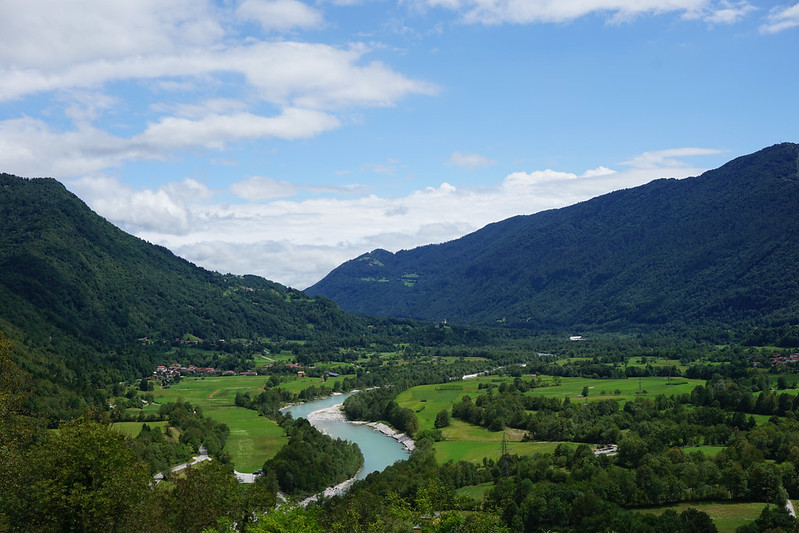
Soca Valley, Slovenia.
For those who’d like a more detailed look at my monthly budgets around the world, here they all are categorized by price range (click on the links for in-depth details on the budgets):
My real monthly budgets
From cheapest to most expensive monthly budget. Click on each location for a more detailed breakdown.
Non-European locations are marked with an *. My favorite places appear in bold. Cost is in parentheses. And I’ve indicated the year the budget is from (obviously account for some inflation when using budgets from 10 years ago) and whether the budget was solo travel or traveling with a partner/friend (partnered travel typically means lower housing costs).
Travel costs in Europe: Which country costs what?
Planning a trip to Europe? Congratulations! Chances are if you are reading this you are new to travelling or at least new to the continent of Europe. Well, fear not, I’ve got you covered! I have been travelling to Europe solo for the last 8 years. My first experience was daunting and overwhelming, but since then I have visited at least once a year and sometimes up to five times a year. So if you are wondering about the travel costs in Europe, get your notepad ready! I’ve got all of the information below to help you plan and budget for your trip.
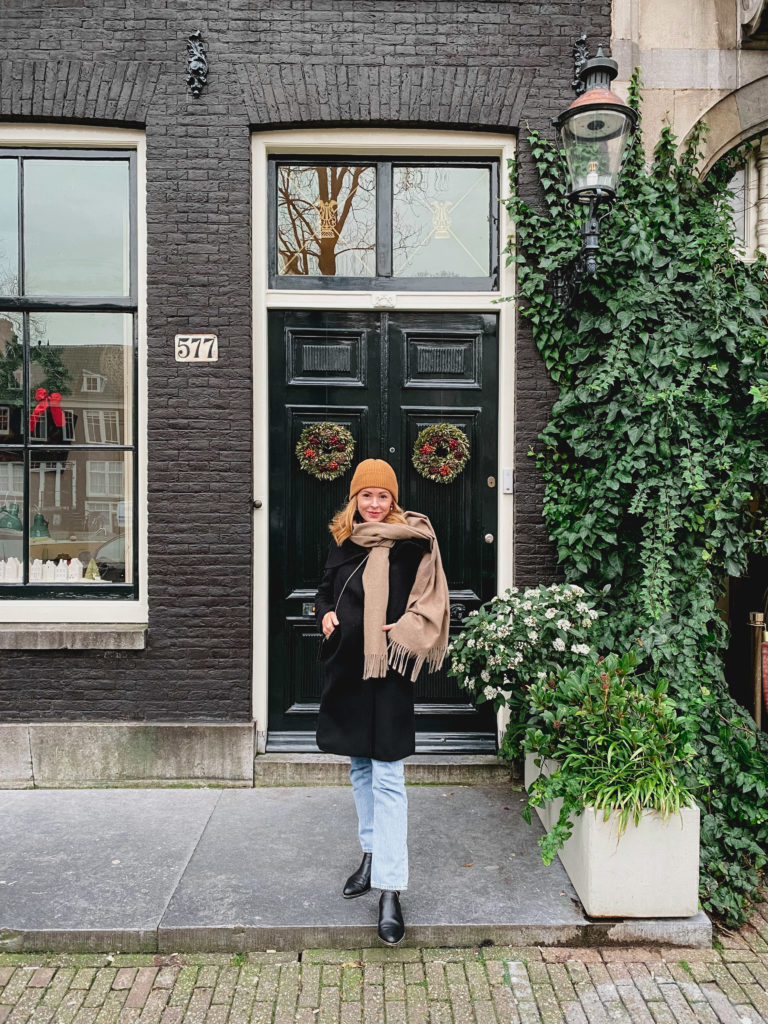
Travel Costs in Europe by Country
So you’re planning a trip to Europe – exciting times! Europe is by far my most favourite part of the world to explore – so much so that I make sure I visit every year.
But you will soon realise Europe is expensive if you don’t know where to go for your budget. Below I will break down the average daily cost of visiting each popular tourist country, as well as how to save money along the way.
For reference, the below prices are costs per person, per day, on average spend. While this budget is a generalisation, you could easily budget to spend less or splurge and spend more. To put it simply, they’re somewhere in the middle! Prices for travel costs in Europe are accurate at the time of publishing in 2020.

The most Expensive Countries in Europe
France
Daily cost: €182.19
The most expensive country in Europe on a daily basis goes to France. This probably doesn’t come as a surprise to many of you – I know I’m not shocked after many trips to Paris!
But the high cost of visiting France is slightly inflated because of Paris. Most travellers visit Paris for a few days of jam-packed sightseeing and then hot tail it out of there to other European cities.
Tips for budgeting:
If you want to save money in France, venture beyond Paris. Food is very affordable throughout the country and even in Paris if you know where to go (hint: its the latin quarter).
Stay at an Airbnb instead of a hotel. They’re way more affordable and you’ll have a much more local experience.

Switzerland
Daily cost: €181.55
Another country I’m sure no one is surprised to see topping this list is Switzerland. Honestly just looking at things in expensive feels expensive! Breathing the clean mountain air feels expensive!
Tips for budgeting:
Shorten your stay. No matter which way you look at it, Switzerland is expensive in every way imaginable. If you have friends or family you can stay with, this will cut out a huge portion of the cost.
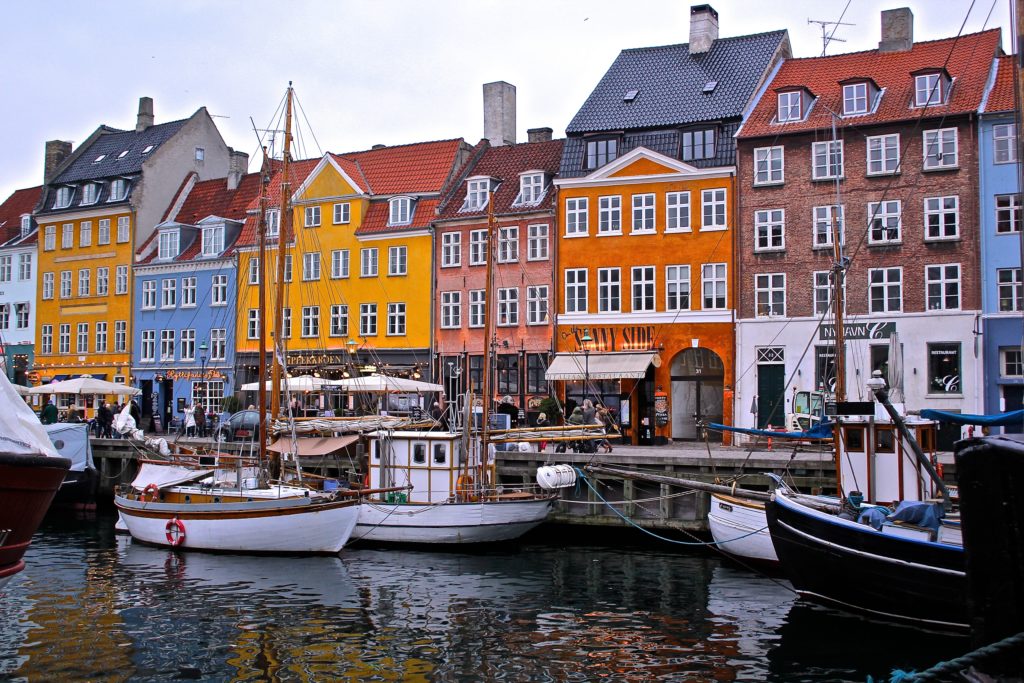
Denmark
Daily cost: €161.46
I visited Denmark in my early twenties and it was so expensive I gave up converting prices and just decided I couldn’t afford anything. If I remember correctly, I ate supermarket sandwiches for dinner and washed them down with a coke zero. Très chic!
Tips for budgeting:
Stay outside of Copenhagen. This is notoriously one of the most expensive cities in Europe. I can personally vouch for that!

Iceland
Daily cost: €133.63
I knew before I visited Iceland that it was going to be an expensive trip. The flight itself was a steal (Barcelona to New York via Reykjavik), offering a cheap stopover en route to NYC.
Iceland is expensive in terms of hotels, food, petrol and entrance fees. Even to visit the waterfalls you need to pay an entrance fee!
Tips for budgeting:
Road trip between destinations and travel with a friend to split the costs. Affordable hotels are available throughout the country, especially where there is more demand in Reykjavik.
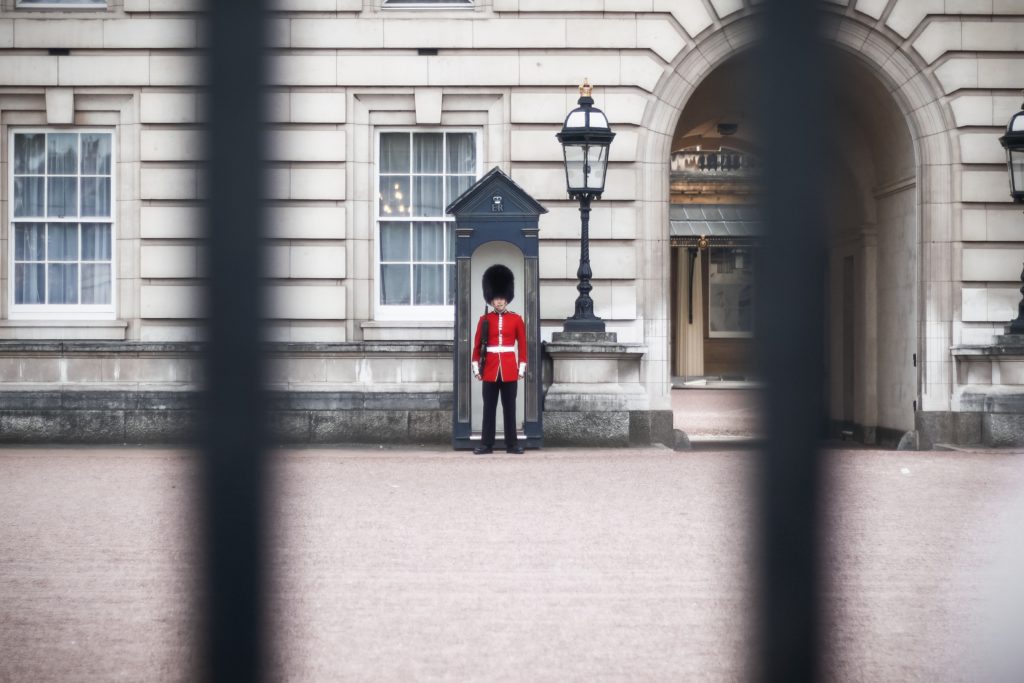
United Kingdom
Daily cost: €127.40
When you visit Europe for the first time it is highly likely London will be on your agenda. And for good reason! This iconic city is year after year the most visited city in the world. The main expense when visiting the United Kingdom is accommodation. It doesn’t help that the pound always performs favourably to most other world currencies.
Tips for budgeting:
Waitrose and Sainsbury’s are your friend. You can grab a quick sandwich snack to eat on the go and skip the expensive restaurants. Many if London’s museums are free, as are the parks and just walking around Soho will fill an entire day of entertainment. Other cities outside of London are much more affordable to visit.

Italy
Daily cost: €124.14
This one may come as a bit of a surprise to you, because with cheap pizza and house wines, how could it be expensive!? While the food is affordable, the price to travel through Italy quickly adds up. Cities like Rome, Venice and Florence are the most expensive.
Tips for budgeting:
Get outside of the touristic cities and stay in small towns. Instead of staying in Florence, try Lucca. Instead of staying in Venice, stay in Verona. You can always take a train and make day trips!

Netherlands
Daily cost: €122.66
When you think of the Netherlands, you think of Amsterdam. That’s normal! But I promise you there is so much more to the Netherlands beyond the city of Amsterdam. Besides, other cities are much cheaper to visit! The average price per day spent in the Netherlands is €122.66. But you can easily save money with these few tips.
Tips for budgeting:
Check in to an Airbnb in Amsterdam or a local hostel if that’s your style. You can also save money by splitting the cost with a friend. Street food is readily available in major cities and is not only cheap but tasty!

Finland
Daily cost: €120.73
Finland is an expensive country to visit whether you’re in the capital, Helsinki, or further afield in small towns.
Tips for budgeting:
Try staying with a local family for a local experience. I stayed with a family in the lakes district and not only was it affordable but also gave me an insight into the local culture.
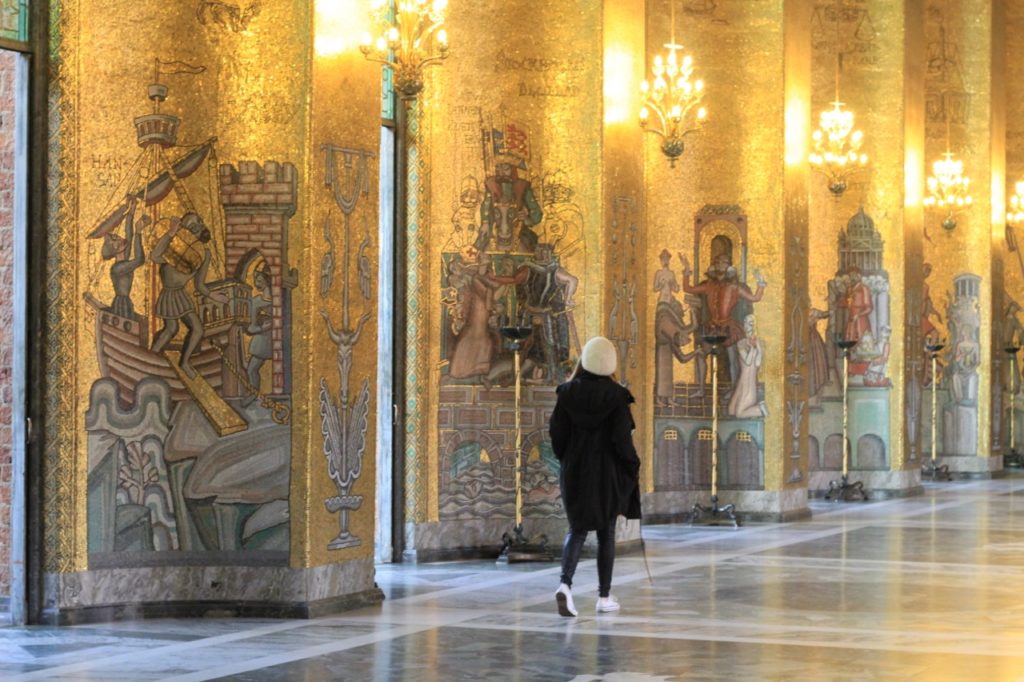
Sweden
Daily cost: €112.67
The most expensive city to visit in Sweden is Stockholm. But don’t let that stop you! There are some great free attractions plus the public transport is easy to use.
Tips for budgeting:
Use the public transport and swap restaurants for cheap eats and supermarket lunches. If your accommodation offers breakfast, make this your biggest meal of the day.

Somewhere in the Middle
Spain
Daily cost: €111.96
Spain is reasonably expensive to visit but as soon as you exit the big cities (like Barcelona and Madrid) it becomes a lot more affordable.
Tips for budgeting:
Swap big cities for small towns. Indulge in tapas and kick back with a jug of sangria!
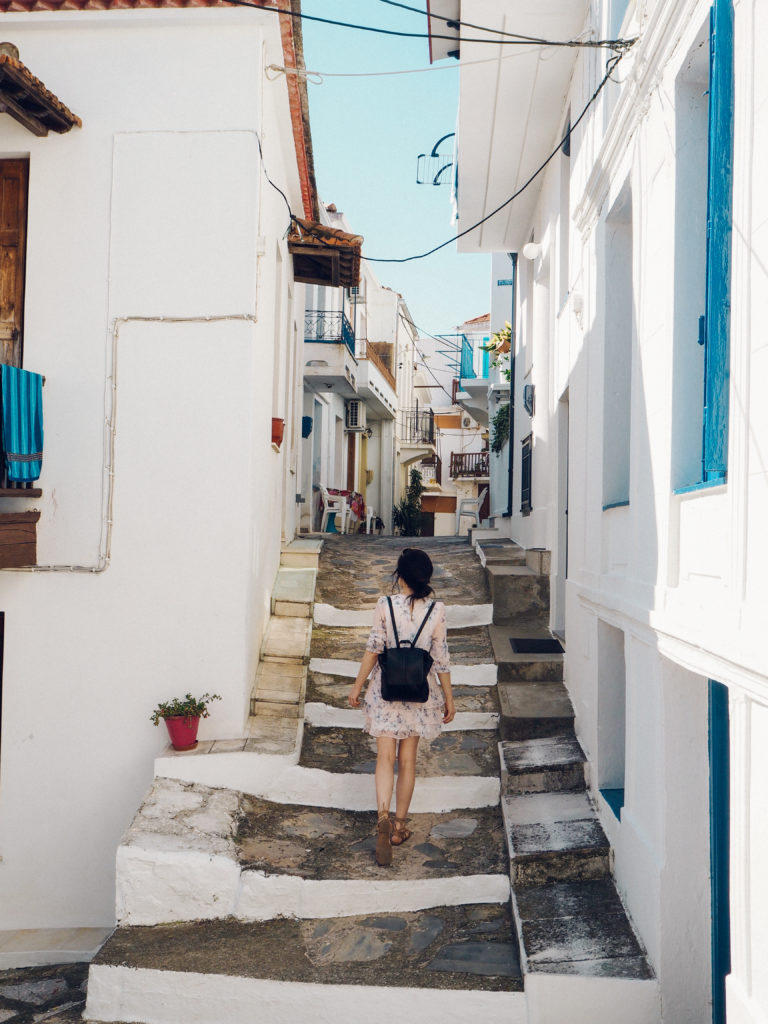
Greece
Daily cost: €110.33
Greece can be expensive but it doesn’t have to be. There are some great ways to save money, especially if you aren’t short on time. Local ferries are a great option for island hopping and they’re much more affordable than flying between the islands.
Tips for budgeting:
Use local transport to save on travel costs between the islands. It will take a little longer but it is the journey, not the destination that matters! If you are carefully considering travel costs in Europe, sometimes you have to sacrifice time to save money.

Ireland
Daily cost: €109.47
Ireland is one of my favourite countries to explore in Europe. It is so naturally beautiful and sets the scene for a perfect road trip! As soon as you leave Dublin, the country becomes much more affordable to enjoy.
Tips for budgeting:
Road trips are a great way to see this country but public transport is much more affordable if you’re on a budget.
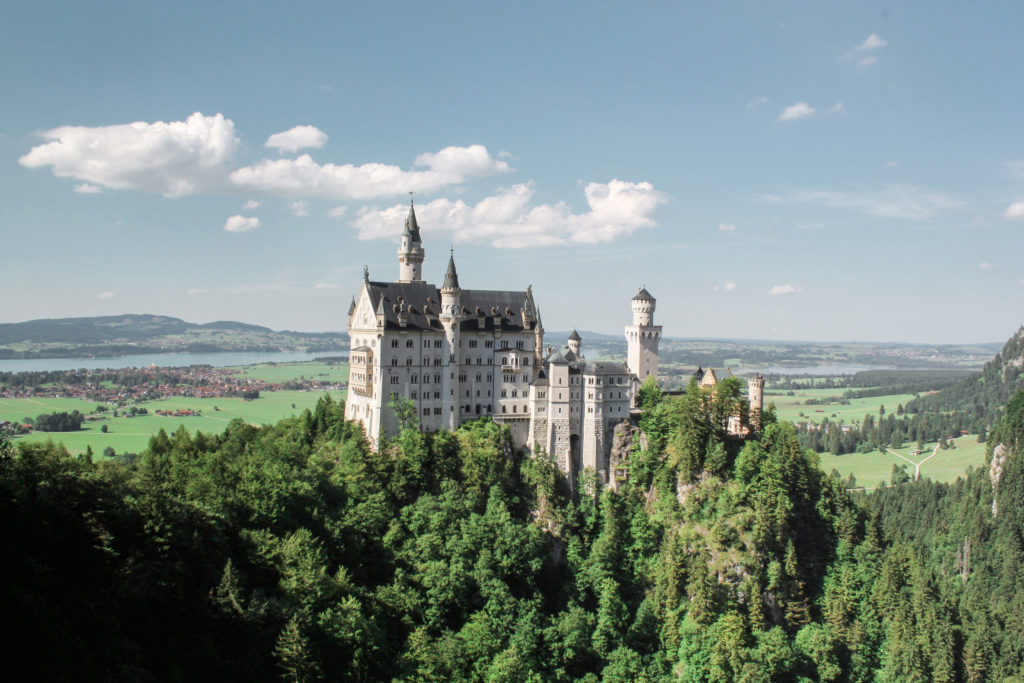
Germany
Daily cost: €106.78
Germany is in the heart of Europe, meaning it is really well connected with trains. This makes for a great adventure by land and will also save you money. The large cities like Berlin, Cologne and Munich are much more expensive than the countryside.
Tips for budgeting:
Swap the major cities for countryside escapes.
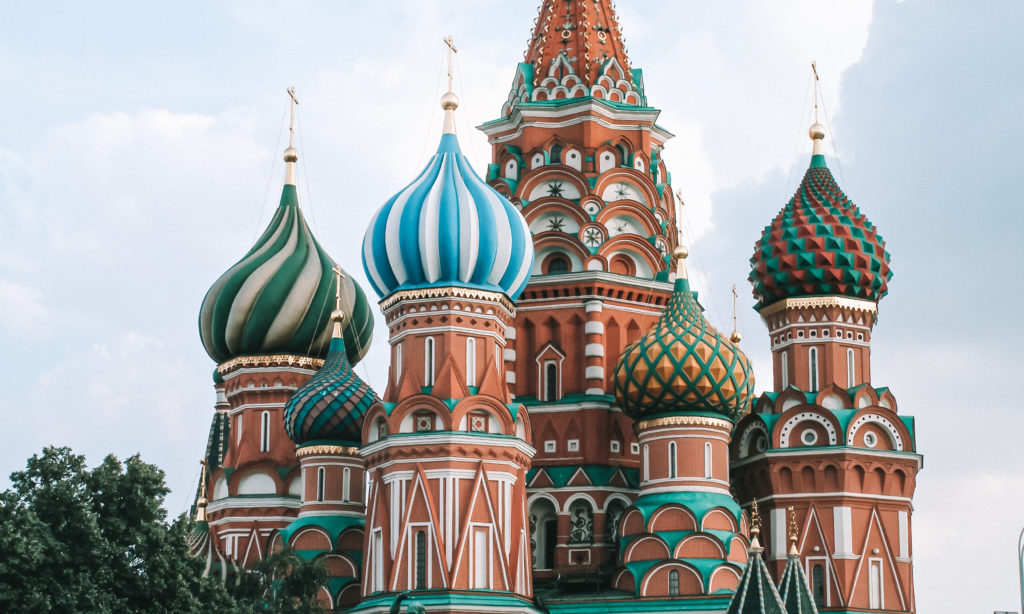
The Cheapest Countries in Europe
Serbia
Daily cost: €18.75
Serbia is the most affordable country on a day-to-day cost analysis. If you are carefully considering travel costs in Europe, Serbia is a great option for budget travellers. Belgrade is a surprising city with so much to offer visitors and I can highly recommend it!

Ukraine
Daily cost: €23.00
Ukraine is another great choice for travellers considering travel costs in Europe. The local transport might seem daunting at first (as no signs are in English). However, you would be surprised how much you can converse with hand gestures and broken English!
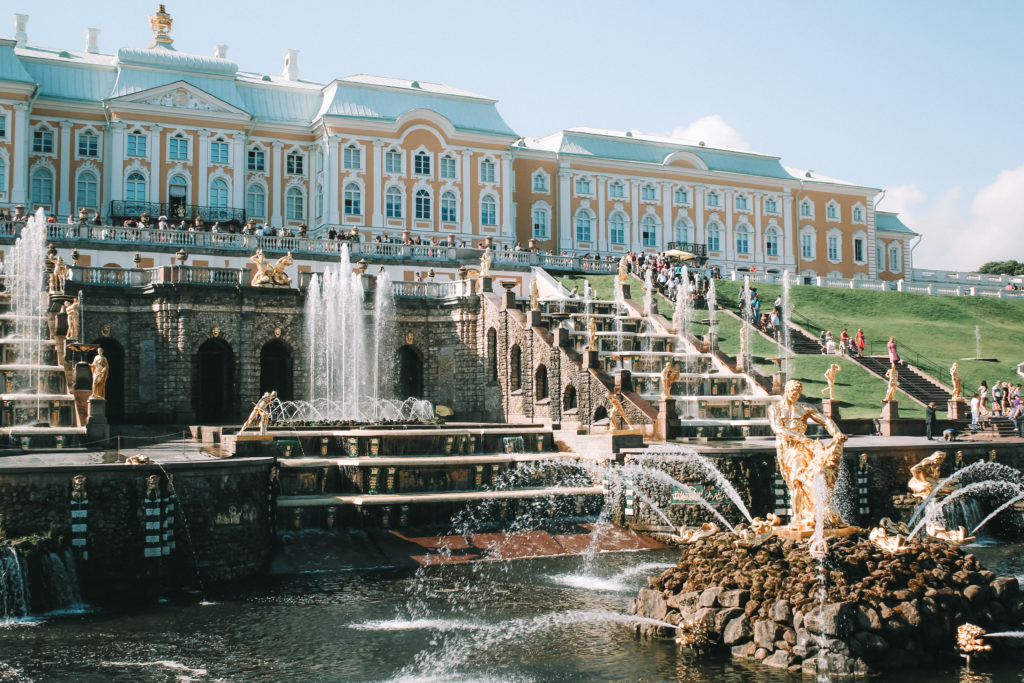
Russia
Daily cost: €38.92
Russia is one of the more affordable countries in Europe to explore, however Moscow and St Petersburg are still quite expensive. If you’re up for a real adventure, head out into the small towns and spend more time off the beaten path.

Albania
Daily cost: €41.31
One of my friends recently went on her honeymoon to Albania. It isn’t the ordinary first choice for a honeymoon but she said it was a great adventure! Albania is still one of the least visited countries in Europe. This makes it very affordable and quite underrated.

Bulgaria
Daily cost: €51.04
Still in Eastern Europe, Bulgaria is a great choice for budget travellers. As you might have already noticed the more you venture East, the more affordable it becomes.
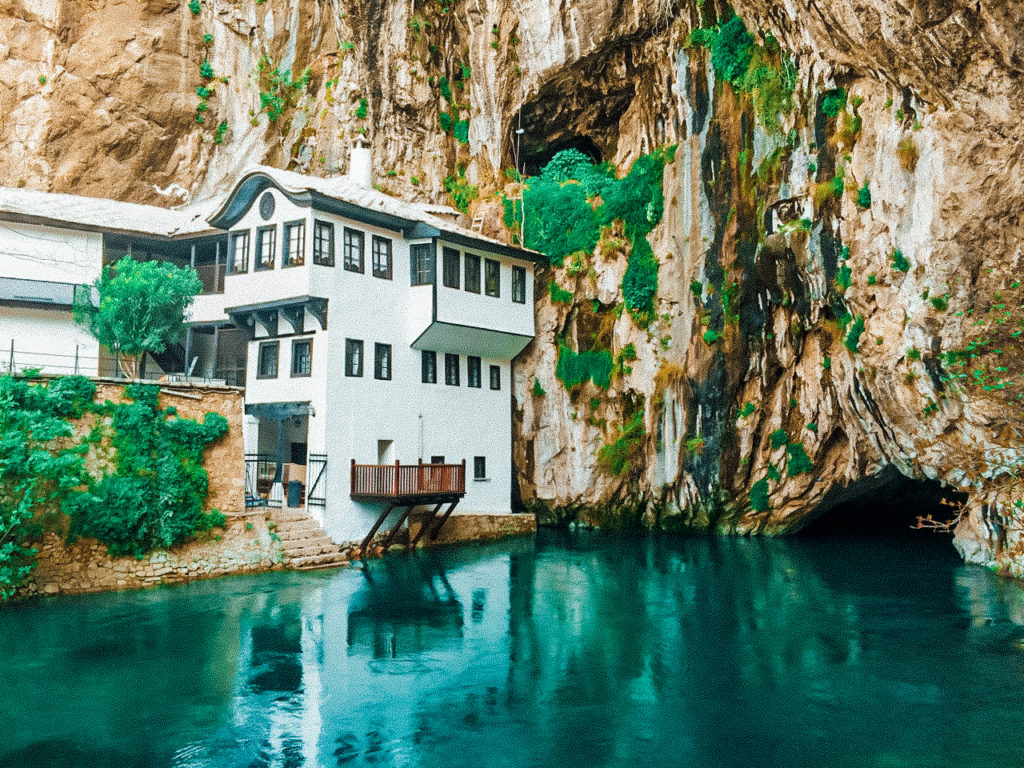
Bosnia & Herzegovina
Daily cost: €54.85
Bosnia and Herzegovina is one of my fondest travel memories. This country is so underrated and the locals are so welcoming to foreigners. To save money on my trip, I stayed with a local Bosnian family in Blaggaj. They were kind enough to cook me breakfast every day and even drive me to Mostar each day!
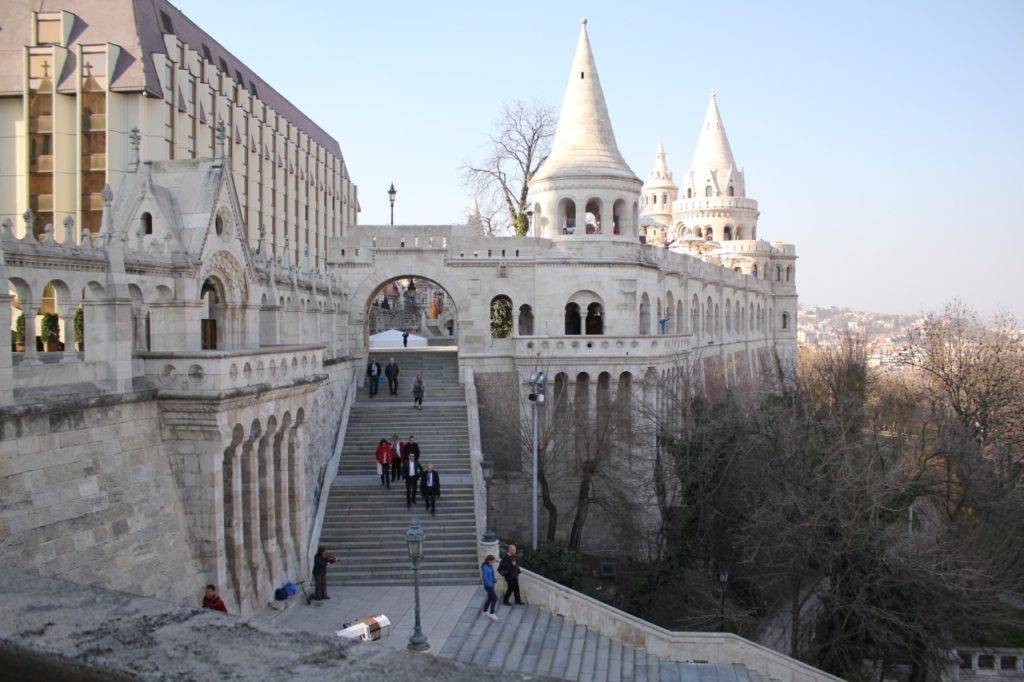
Hungary
Daily cost: €57.68
Budapest has become one of the most sought after cities to explore in Europe. The capital city of Hungary has a high supply of accommodation, making it affordable to stay for a while.
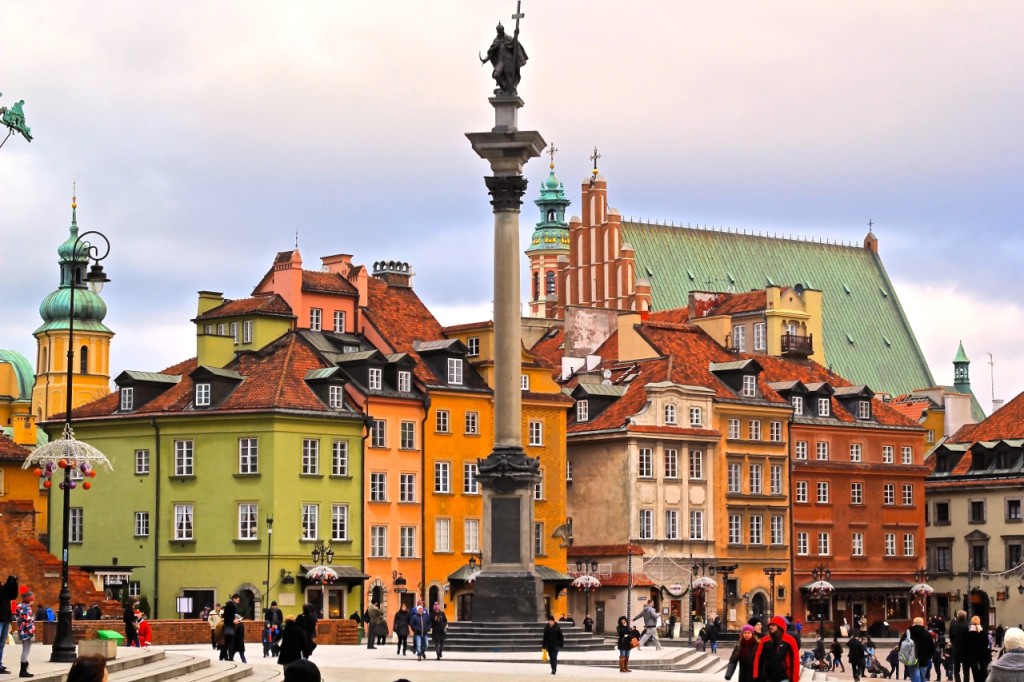
Poland
Daily cost: €58.58
Finally we round out our list with Poland. This country is often overlooked by visitors, although many travellers make their way to Krakow in the South. However if you make it all this way, I would strongly encourage you to spend more time in Poland! The capital city of Warsaw has been one of my favourite capital cities in Eastern Europe.
Source https://govisafree.com/most-expensive-cities-in-europe/
Source https://gigigriffis.com/cost-of-traveling-europe/
Source https://worldofwanderlust.com/travel-costs-in-europe-which-country-costs-what/